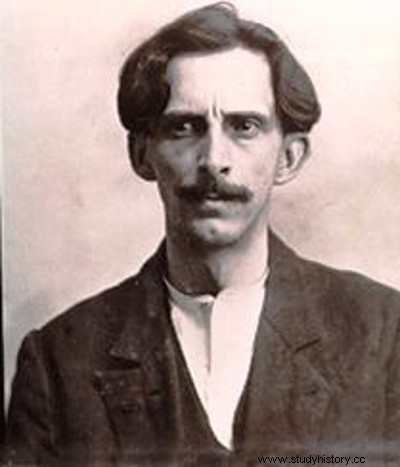
By Me. Cláudio Fernandes
In the early years of its establishment, the Republic had to face, in Brazil, a series of revolts in predominantly rural, sertaneja areas. This was the case, for example, with the War from Straws. However, in the period of the so-called Old Republic (which lasted until the year 1930), there were also several urban movements, such as tenentismo. Others were added to tenentism, such as anarchism , which this text is about.
The anarchism is a political-philosophical conception that emerged in Europe in the 19th century, at the same time as the various currents of socialism and communism, proposed by Karl Marx and Friedrich Engels . The main representative of anarchist ideas in the 19th century was the Russian Mikhail Bakunin . As its name implies (anarchy =without government, absence of government), anarchism propagated ideas against the State, that is, institutional organizations, in general, and against “the bosses”, that is, the industrial and urban business community. , above all.
Throughout its history, anarchism has articulated itself in many ways. The offshoot known as anarcho-syndicalism it was what infected the mass of Brazilian urban workers in the period of the Old Republic. Anarcho-syndicalism arrived in Brazil mainly through Italian immigrants, who already had contact with the forms of organization of European anarchist unions, which had leaders such as the Italian Errico Malatesta .
The entry of anarcho-syndicalist ideas in Brazil coincided with the formation of urban centers, such as São Paulo, where several factories were being set up, thus receiving a considerable amount of workers. Since the 19th century there were workers' parties in Brazil, however it was with anarchism that the great pressures against the business community began. The main weapon of the anarchists was the strike general . Through this instrument, anarchists aimed at a radical transformation of society, yearning to eliminate the governmental structure, as summarized by the historian Boris Fausto, in his História do Brasil :
“Anarcho-syndicalists believed that their objective would be achieved with the overthrow of the bourgeoisie from power, without a long period of transition afterwards. This would be achieved through a great act:the revolutionary general strike. The anarchist union, led by commissions that were supposed to express the will of union members and not their own will, represented an outline of the society they intended to restore. A society without a State, without inequality, organized in a free federation of workers. ” [1]
The main achievement of anarcho-syndicalism in Brazil was the Strike of 1917 , whose main articulators were the typographer and journalist Edgard Frederico Leuenroth (1881-1968). This strike exploded, above all, after the death of a Spanish anarchist who worked in a factory in Brás, in São Paulo, named José Martinez. Martinez died while, along with other co-workers, he was protesting in the streets, when they were harassed by the police.
From 1917 to the early 1920s, anarchism had a very strong presence among Brazilian workers' organizations. The foci of anarchist organization, as well as those of communist organization, were stifled in the 1930s with the rise of Getúlio Vargas to power.
NOTES :
[1] FAUST, Boris. History of Brazil . São Paulo:EDUSP, 2013. p. 255.
*Image credits:Commons
Take the opportunity to check out our video lesson related to the subject:
